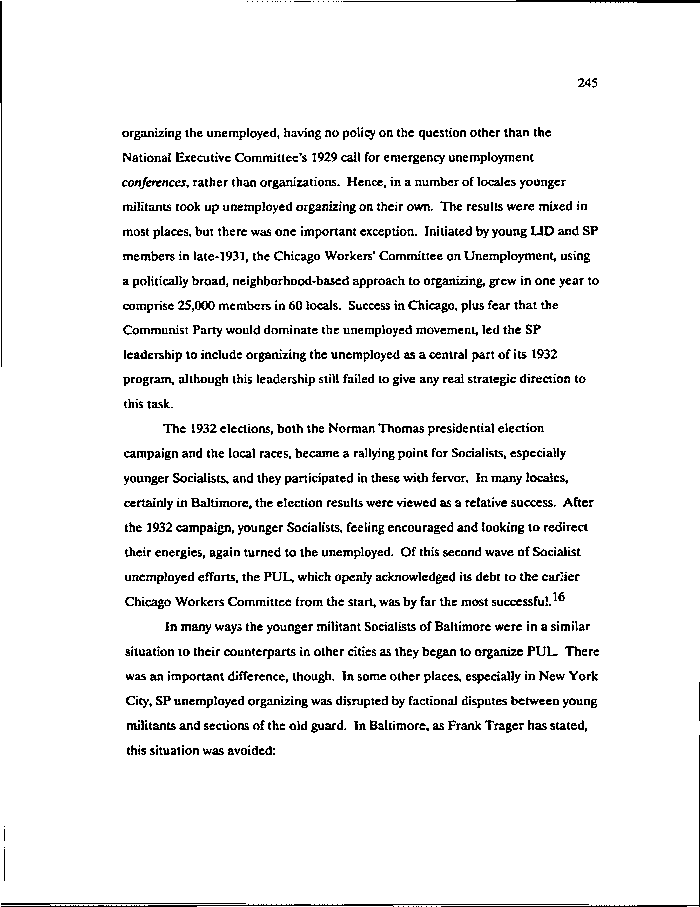|
245
organizing the unemployed, having no policy on the question other than the
National Executive Committee's 1929 call for emergency unemployment
conferences, rather than organizations. Hence, in a number of locales younger
militants took up unemployed organizing on their own. The results were mixed in
most places, but there was one important exception. Initiated by young LID and SP
members in late-1931, the Chicago Workers' Committee on Unemployment, using
a politically broad, neighborhood-based approach to organizing, grew in one year to
comprise 25,000 members in 60 locals. Success in Chicago, plus fear that the
Communist Party would dominate the unemployed movement, led the SP
leadership to include organizing the unemployed as a central part of its 1932
program, although this leadership still failed to give any real strategic direction to
this task.
The 1932 elections, both the Norman Thomas presidential election
campaign and the local races, became a rallying point for Socialists, especially
younger Socialists, and they participated in these with fervor. In many locales,
certainly in Baltimore, the election results were viewed as a relative success. After
the 1932 campaign, younger Socialists, feeling encouraged and looking to redirect
their energies, again turned to the unemployed. Of this second wave of Socialist
unemployed efforts, the PUL, which openly acknowledged its debt to the carrier
Chicago Workers Committee from the start, was by far the most successful.
In many ways the younger militant Socialists of Baltimore were in a similar
situation to their counterparts in other cities as they began to organize PUL. There
was an important difference, though. In some other places, especially in New York
City, SP unemployed organizing was disrupted by factional disputes between young
militants and sections of the old guard. In Baltimore, as Frank Trager has stated,
this situation was avoided:
|

